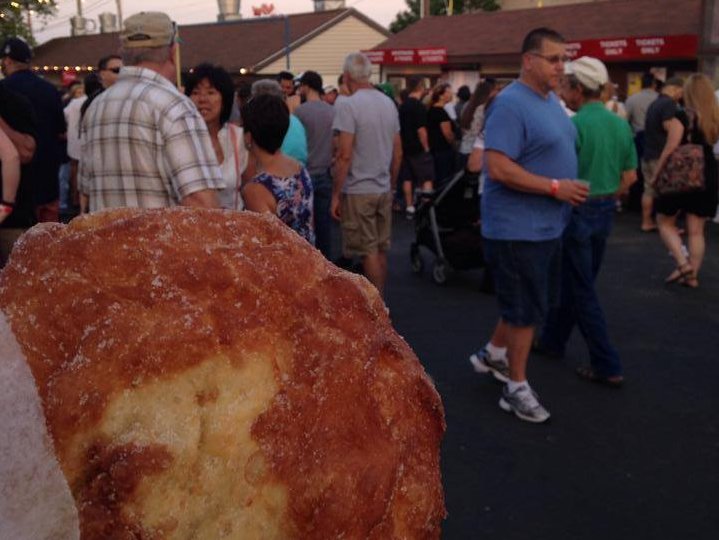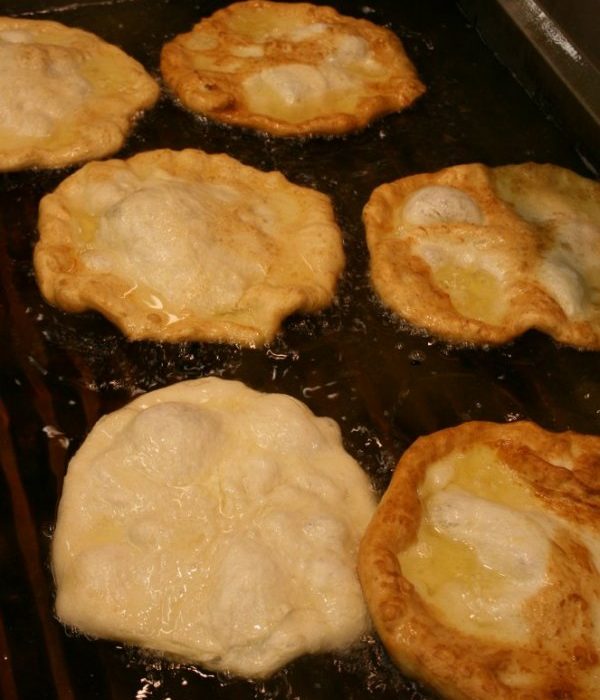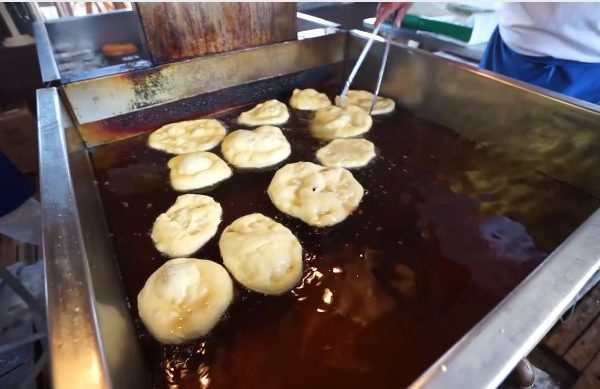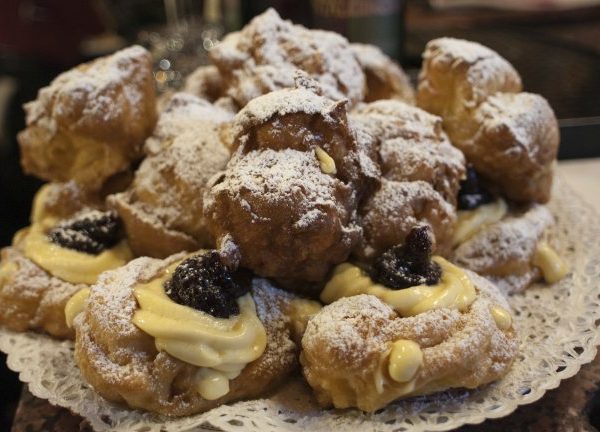Foodie’s Guide to Regional Gastronomy: The Malasadas – Portugal’s Glorious Version Of Fried Dough
Malasadas being prepared at everyone’s favorite city celebration: The Feast of the Blessed Sacrament.
Series Introduction
In this series, we hope to highlight and showcase in as interesting a way as possible, the stories behind our favorite, mouth-watering local dishes. While we’ll focus on greater New Bedford and the South Coast, we will occasionally “travel” to places like Plymouth, Providence or even Boston. I will attempt to keep it light-hearted, fun and easy to read. While I can’t promise to keep you compelled and pull you along with prose – that would take a professional writer – I will promise to be liberal with the drool-inducing images of these dishes.
I grew up in a Sicilian household where everyone – man, woman, child – was participating in preparing meals. It was a “trick” to get everyone together, talking, laughing and of course, the occasional heated debate. Food was a huge part of our identity, where we came from, who we were. There was something special about the atmosphere that revolved around a meal that we prepared.

This is certainly not unique to an Italian or Sicilian household. Every ethnic group in the country has a proud culinary tradition that they grew up around. You can easily replace “Sicilian” with Irish, Vietnamese, Portuguese, Ethiopian, Greek or anything else. This is why food as a topic is always so popular. We humans love our food and that passion goes beyond the gustatory or taste – we crave the aromas, delight in the presentation, are fueled by the atmosphere, and relish – pardon the pun – discussion about our favorite dishes, restaurants or cuisines.
One thing that is often not discussed – is glossed over, or barely touched upon – is the history or background of these dishes. Now, to some, this conjures up the voice of the guy from the “dry eyes” commercial. The terms, for many, are synonymous with “boring,” “dull,” or “It’s time to go.” However, the background can be interesting, fun, or funny and it can be so without being facetious, dumbed-down or popular. I will make every attempt to maintain a fresh balance with those elements in this series.
As always, feedback is encouraged. Anecdotes are wanted. Discussion is paramount. Please join in.
_______________________________________________________________________
Ah, imagine life without having ever had a malasadas? Do you remember the first time you saw one as a kid? What a moment. It’s amazing how popular something so simple, with so few ingredients can have such a marked effect on people and be so popular.
Meaning “poorly cooked,” malasadas are yeast-leavened “doughnuts” or fritters without a hole in the middle, are enriched with butter and eggs, fried to a delightful golden brown, rolled in sugar and served.
They are typically stretched into a rustic, round shape, or even a triangle or square. Also referred to as “filhoses,” in some parts of Portugal like Graciosa, the filho resembles the perfectly circular doughnut we are all familiar with.
That former, rustic style circular shaped ones are the ones served in most areas of Portugal and in the Portuguese communities along the South Coast. However, there are other Portuguese enclaves throughout the nation, most notably the rather large one in Hawaii. There, it is also shaped like a doughnut is typically shaped, and may be topped or filled with a variety of things, such as evaporated milk, plain custard, a coconut-flavored pudding called haupia or, of course, Hawaii’s beloved pineapple.

Hawaii’s version, more of a filho resembling a traditional doughnut, commonly has toppings or fillings. Photo by _e.ts_.
The origins are sort of clouded in mystery. The Portuguese will proudly say that the invention of the tasty treat originated in the Azores, specifically, the island of São Miguel. It is said that sometime early in the 15th century, someone’s avó created the malasadas to feed the cravings of a grandchild. Others say, it was a by-product of Muslim occupancy and rule over Portugal as early as the 8th century.
Thing is that fried dough is universal across cultures and time. It’s just one of those things that has been around forever – since at least 8,000 B.C.E. and mentioned in ancient Sumer, Egypt and China. The ancient Romans had scriblita, and today they have zeppole or fritelle. Native Americans have fry bread, Canadians have beaver tails, “Newfies” have Touton, Americans have versions served at festivals and carnivals, called Elephant Ears, doughboys, or fry dough.
Whatever you want to call it, some variation is made in most countries because of its simplicity to make and availability of the ingredients. And whatever you want to call it, it’s mouth-watering delicious and now I want one!




